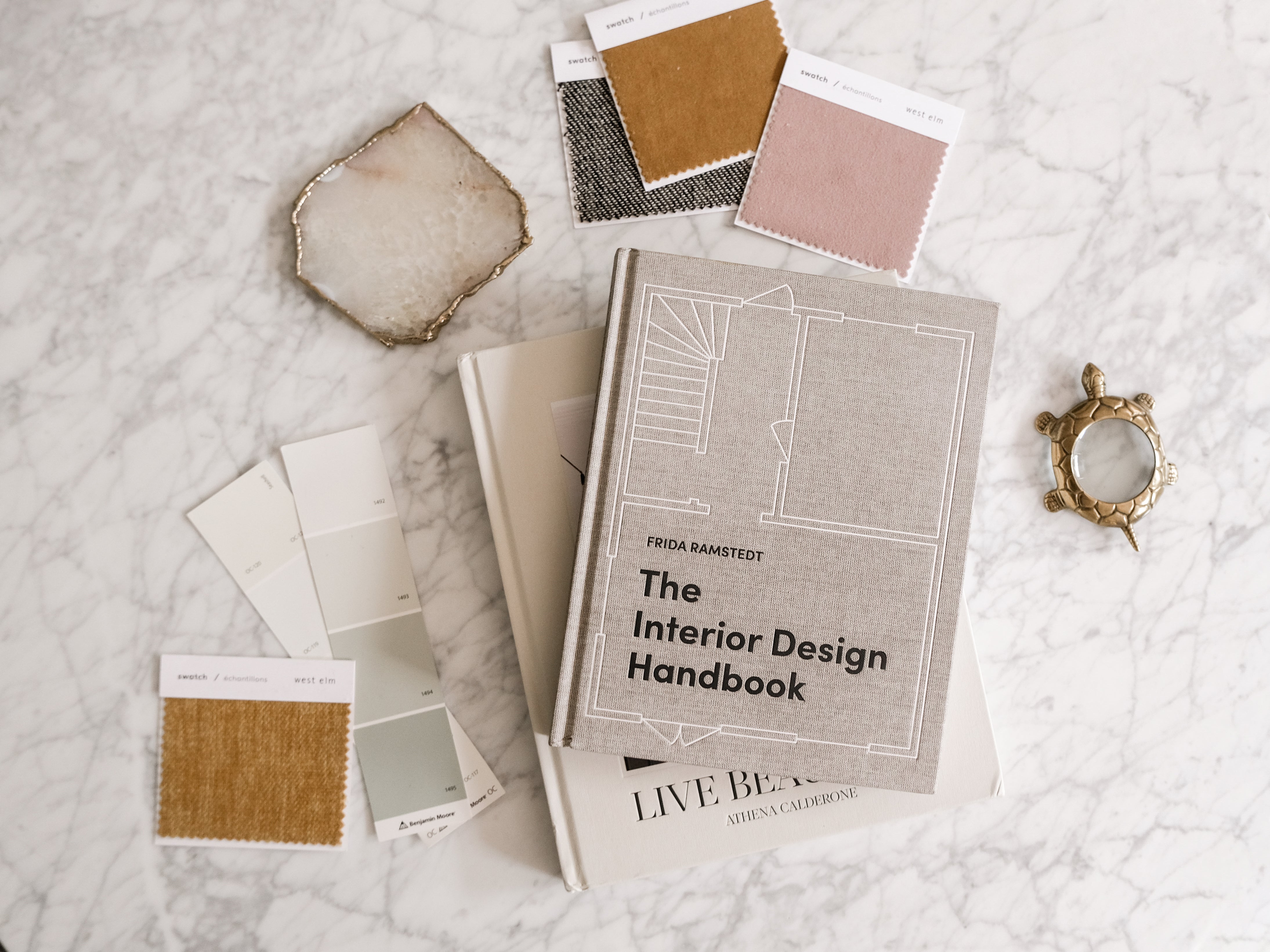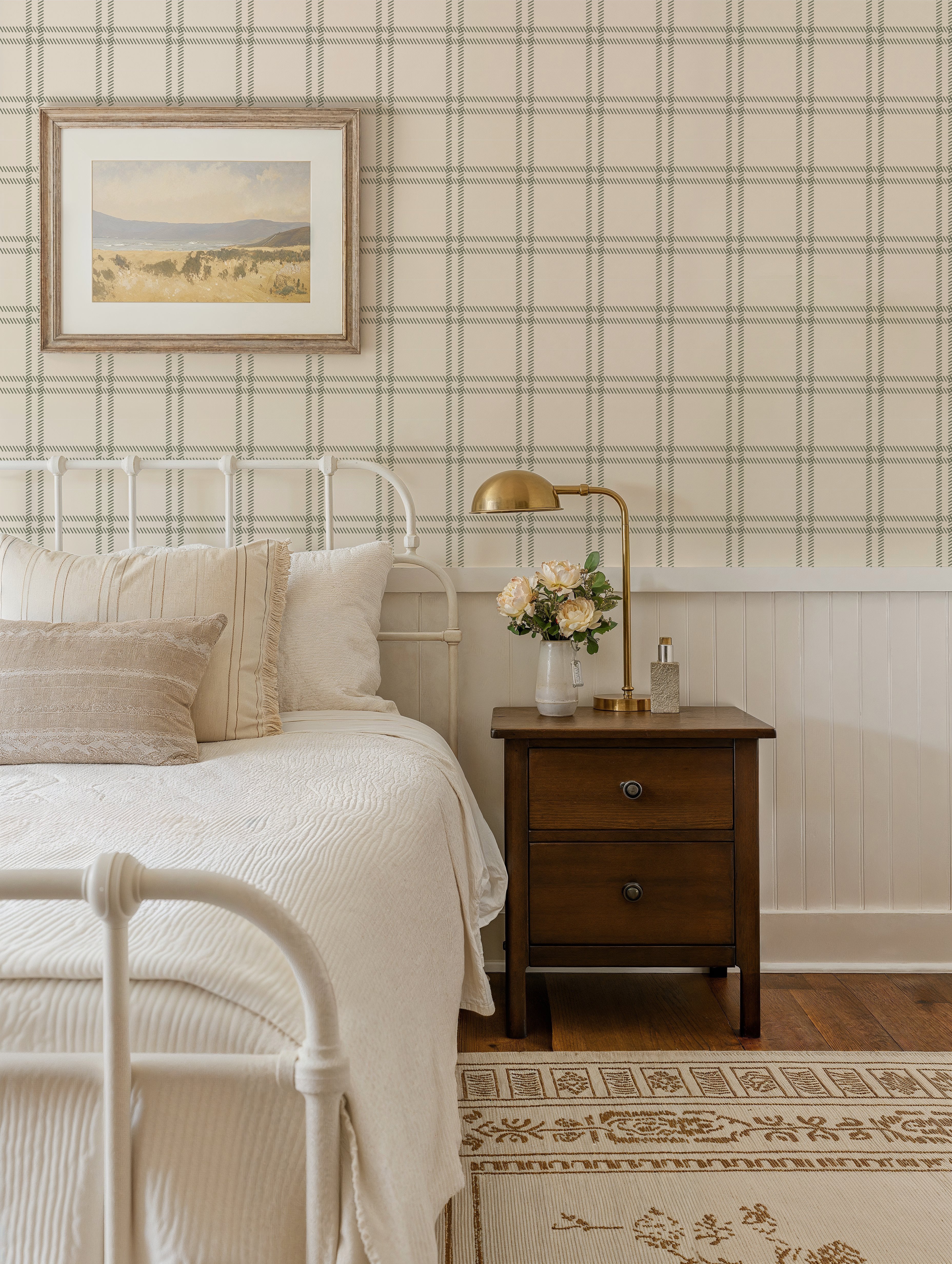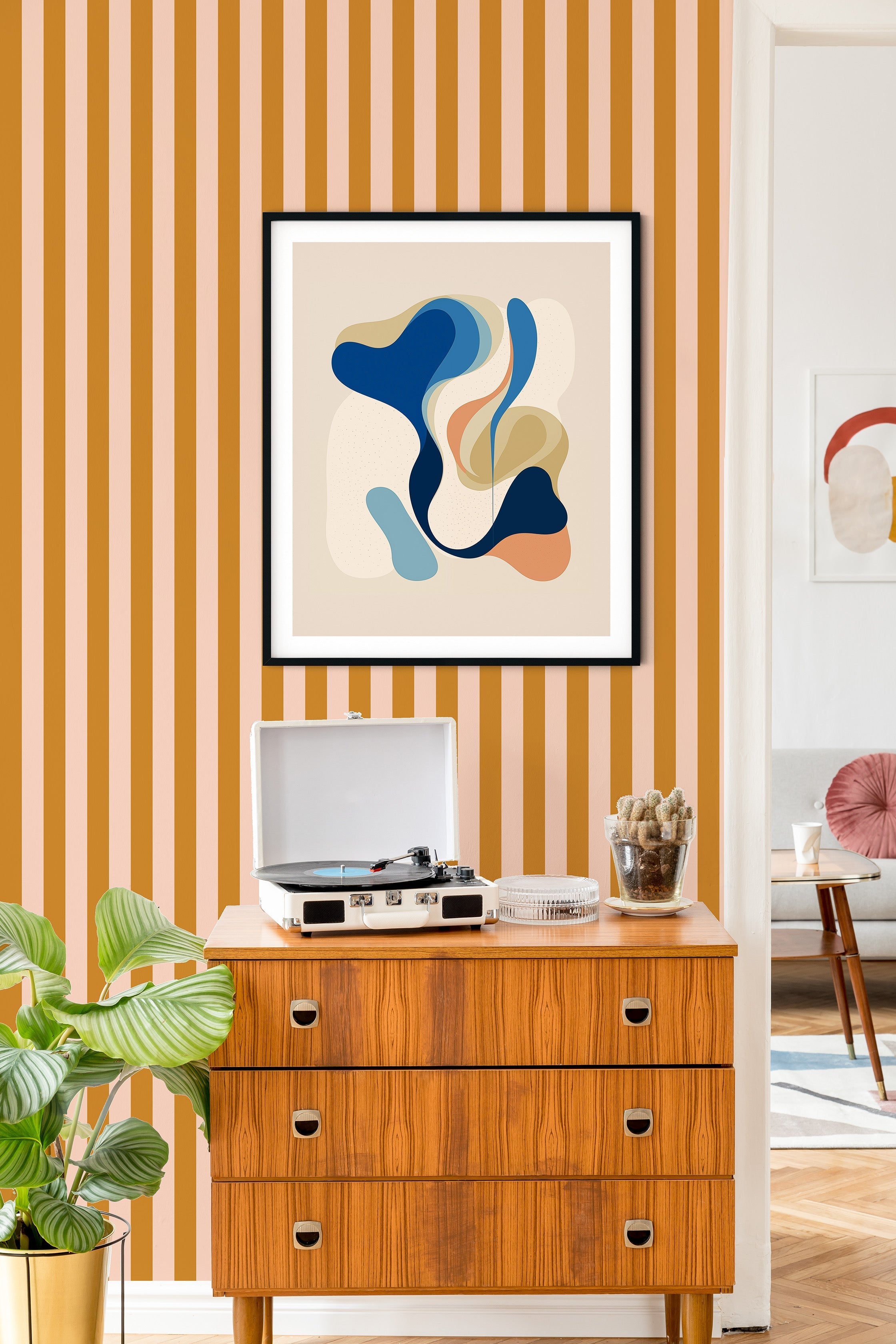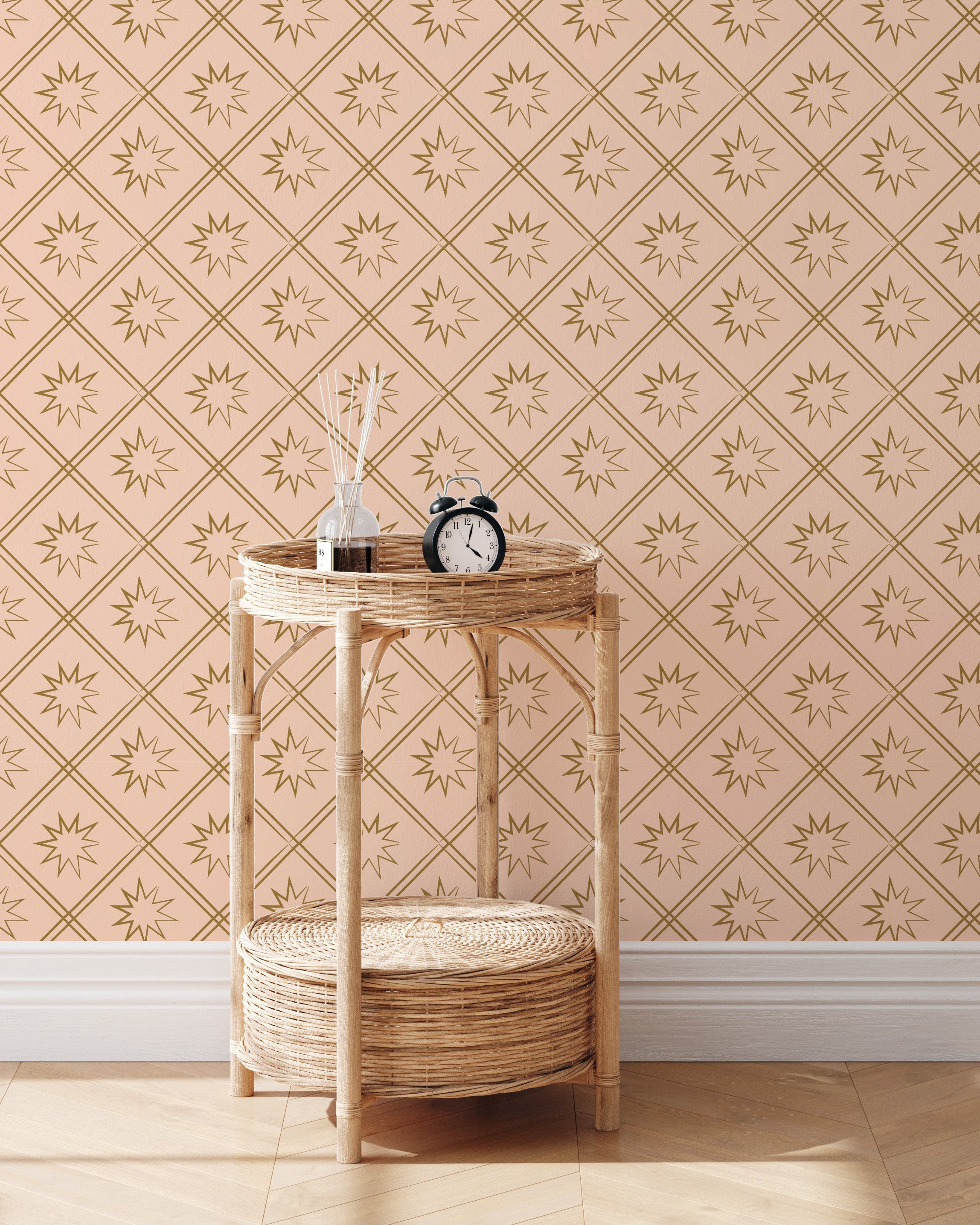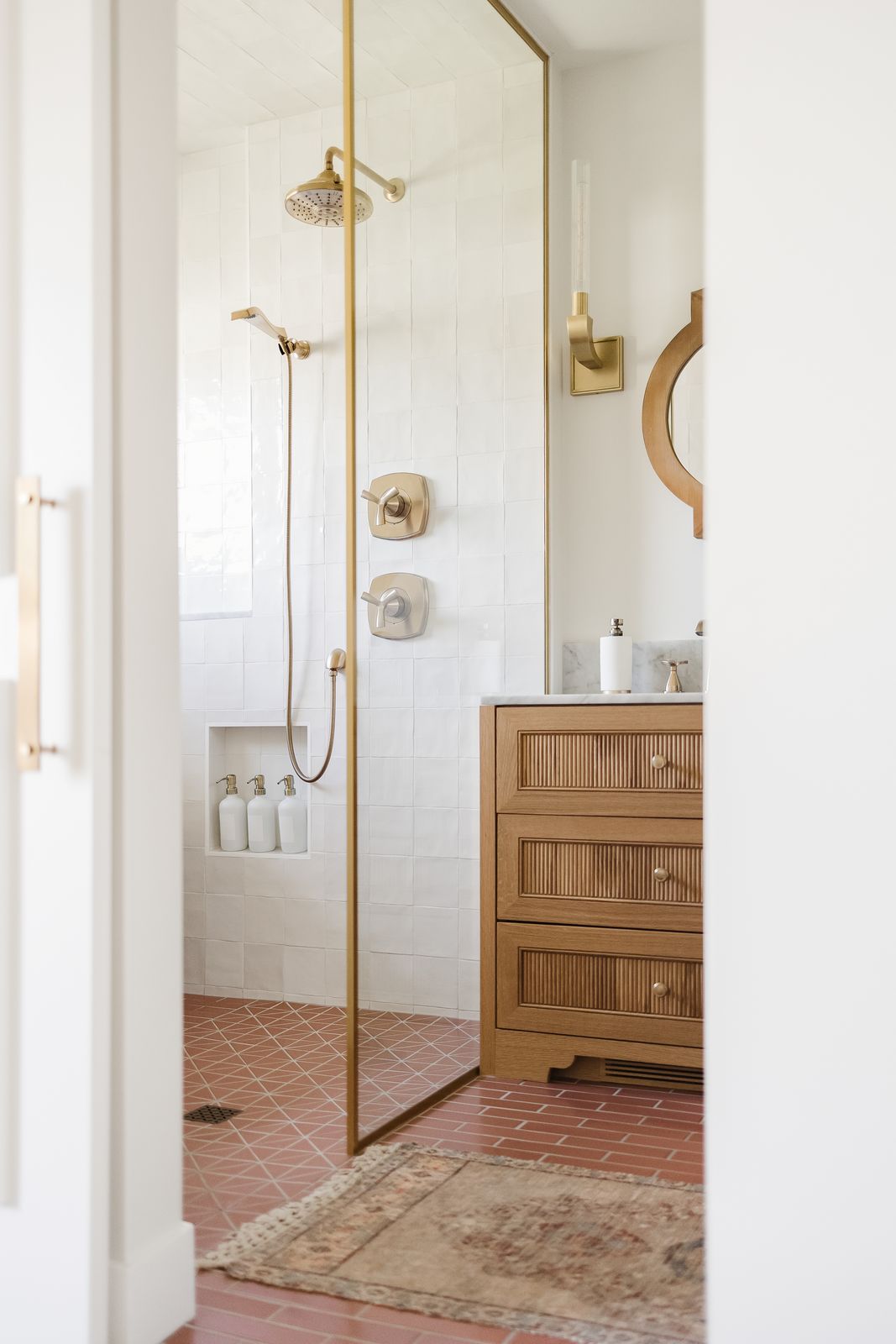Wallpaper Installation Guide
You've selected your perfect pattern, measured your walls, ordered the rolls, and finally the day is here – it's time to install your new wallpaper.
If you're DIY-ing your installation, we've written this complete guide to help you get the best results possible. Let's dive in!
Materials
- Wallpaper Rolls
- Sponge
- Wallpaper Paste (for traditional wallpaper)
- Smoothing Tool
- Roman's EZ Hang Spray (optional, but helps make peel and stick wallpaper more re-positionable)
Surface Prep
To ensure a successful wallpaper installation, it's crucial to properly prepare the wall surface. Begin by thoroughly cleaning the wall area with a stiff bristle brush to remove any dirt or loose material. Next, use a detergent or sugar soap solution to eliminate grease or surface marks. Allow the wall to dry completely before proceeding.
If you encounter mold or algae on the surface, treat it with a fungicidal wash according to the product instructions. Ensure the surface is entirely dry before moving forward.
Fill any holes, cracks, or defects in the surface with a high-quality filler, smooth it out, and allow it to dry completely. A dry surface is essential for proper wallpaper adhesion, so be patient and take the necessary time for repairs.
For new or unpainted walls, apply a coat of PVA or similar wall sealant to create an ideal surface for wallpaper application.
When working with self-adhesive wallpaper, it's important to ensure the surface is clean and dry. Use a warm, damp cloth to clean the wall and allow it to dry thoroughly. Make sure all previous cleaning products have been removed from the surface. If applying self-adhesive wallpaper to a painted wall, it's recommended to prime the wall first to prevent paint from peeling.
Traditional Wallpaper Installation
- Using a medium-pile paint roller, paste the wall one drop (length) at a time.
- Apply the wallpaper to the prepared surface using a damp sponge and a smooth up-and-down motion. Take care not to squeeze adhesive out at the edges.
- Allow the wallpaper to settle for approximately 15 minutes before trimming the top and bottom.
- To butt join drops, align the design from top to bottom and work away from the butted edge using the same up-and-down motion with a soft sponge. You can also use a small rubber roller to seal the butt joins, but be gentle to avoid damaging the edges.
- Remove any adhesive residue by wiping the surface with a damp sponge.
- Trim as needed.
Peel-and-Stick Wallpaper Installation
- Before starting, perform a small peel-and-stick test on your wall to confirm it's dry and smooth. The quality of the wall finish directly impacts the final appearance of the wallpaper. Note that wall preparation is the installer's responsibility, and Asteria Studio is not liable for any wall damage.
- Begin at the top of the roll, pulling down approximately 4-6 inches of the backer and creasing it.
- Slowly apply the exposed adhesive to the desired surface, taking care to avoid air bubbles.
- Once the initial segment is level and positioned correctly, continue applying the wallpaper in 4-6 inch increments.
- If air bubbles or wrinkles appear, gently peel back the affected area and reapply using a soft, felt-sided squeegee. Avoid pressing too hard, as this may damage the wallpaper. Use the squeegee at a 45-degree angle with overlapping, firm strokes. An air release tool can be used for stubborn air pockets.
- A blow dryer can be helpful in softening the adhesive for easy removal from painted walls or other challenging surfaces.
- Installing self-adhesive wallpaper on untreated or unprimed drywall is not recommended, as it may cause peeling upon removal.
- When removing self-adhesive wallpaper, work slowly and pull straight back (at a 180-degree angle) to minimize tension on the surface.
Wallpaper Care
If your wallpaper becomes dirty, clean it gently with a sponge and mild, soapy water. Only clean when necessary and use minimal moisture. Avoid rubbing too hard, as this may cause a gap in the paper, although the inks will not run.
By following these guidelines and tips, you can ensure a successful and beautiful wallpaper installation. With careful preparation and attention to detail, your Asteria Studio wallpaper will transform your space into a stunning, personalized environment.
Pro tip: if you're not feeling 100% comfortable installing your own wallpaper, we always recommend consulting a professional wallpaper installer. You can find one near you here.



